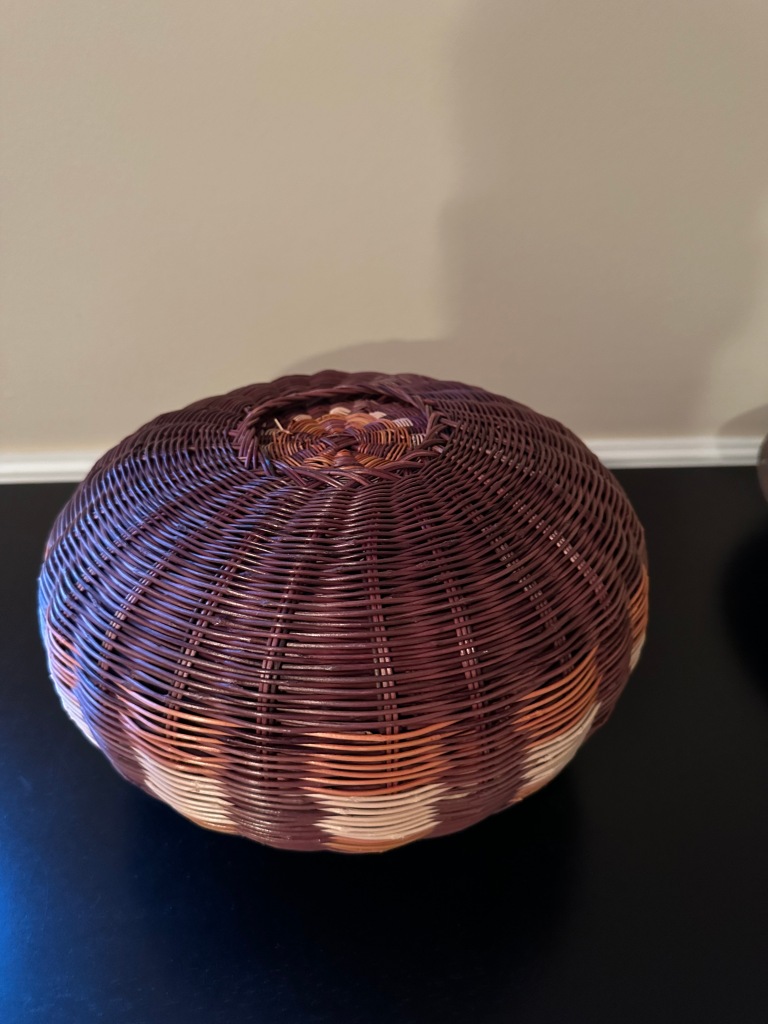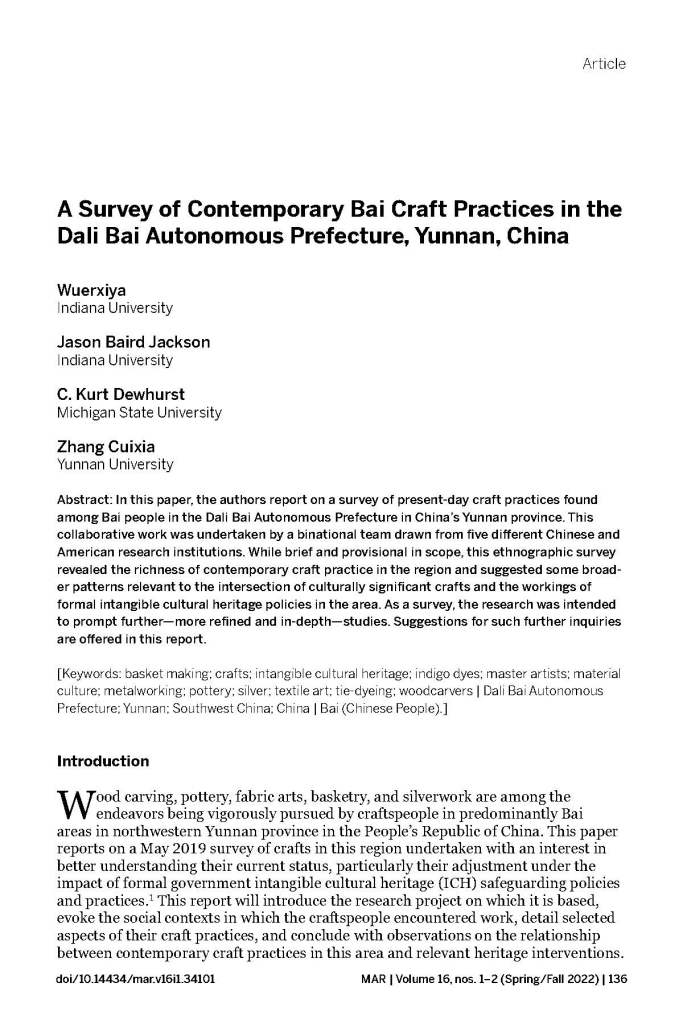A Honeysuckle Basket by Joan Shoemaker (Cherokee)
Pictured here (Figure 1) is a seed pot-style (i.e. globe shaped with a small opening) basket by Joan Shoemaker (b. 1937) (Cherokee Nation) (then) of Locust Grove, Oklahoma. It is of honeysuckle and has dyed elements in three colors produced with walnut hulls, polk berries, and blood root (natural) dyes. The basket comes with a signed artist card attached. It shows the date 1999, which is soon before I received it as a gift (in 2000). (The card also notes the material and dyes.)

As seen from the shot of the bottom (Figure 2), the upper section has suffered light damage over the past two decades.
As noted by Karen Cody Cooper in Oklahoma Cherokee Baskets (2016, 99), two Joan Shoemaker baskets are in the collections of the Sam Noble Oklahoma Museum of Natural History. These are: E/2003/1/001 (a round, flat tray of honeysuckle) and E/2000/1/002 (a round open-mouth basket of honeysuckle).
While the Gilcrease Museum holds paintings by Mrs. Shoemaker’s husband Ben Adair Shoemaker, it does (to my knowledge) not yet curate any of her baskets (Jackson 2000). There are not baskets by Mrs. Shoemaker in the collections of the Department of Anthropology, National Museum of Natural History, Smithsonian Institution. There were no baskets by her in the collections of the former Mathers Museum of World Cultures, at Indiana University*
At the time of this writing, two Joan Shoemaker basketry trays could be seen online at this commercial site: https://www.worthpoint.com/worthopedia/set-cherokee-indian-baskets-joan-1848909520
Note
*I served as a curator at the Gilcrease Museum between 1995 and 2000. This basket was a gift on the occasion of my departure to the Sam Noble Oklahoma Museum of Natural History, where I worked between 2000 and 2004. I have been a research associate of the Sam Noble Museum since 2004. From 2014 to the present, I have also served as a research associate of the National Museum of Natural History. Between 2013 and 2019, I served as the Director of the Mathers Museum of World Cultures.
References Cited
Cooper, Karen Cody. 2016. Oklahoma Cherokee Baskets. Charleston, SC: History Press, 2016.
Jackson, Jason Baird. 2000. “Southeastern Indian Basketry in the Gilcrease Museum Collection.” American Indian Art Magazine. 25 (4):46-55.
This is a first in a series of posts writing up baskets in my family’s modest (mostly-gifts) collection.

















